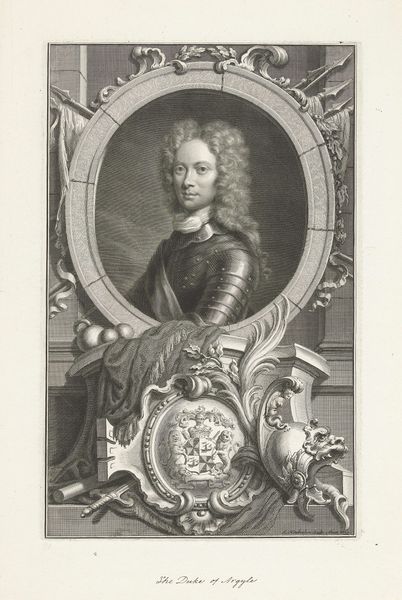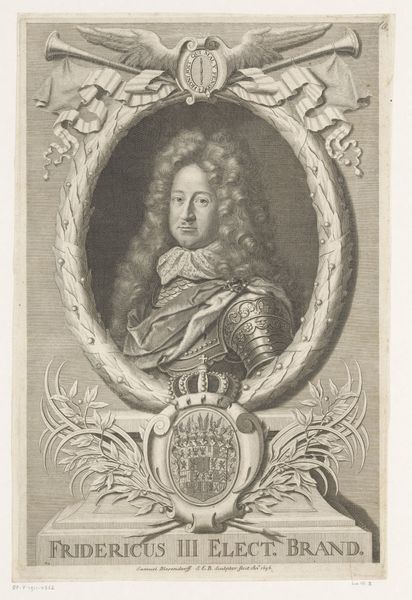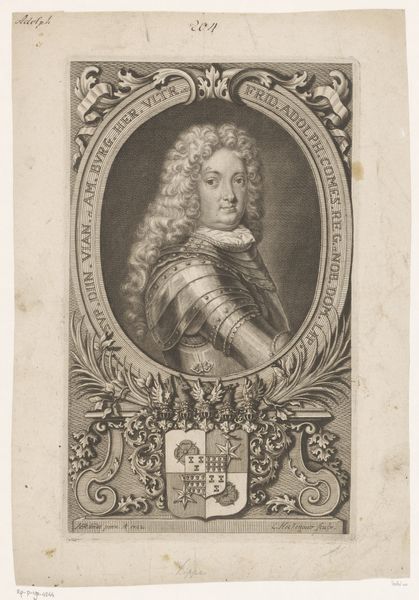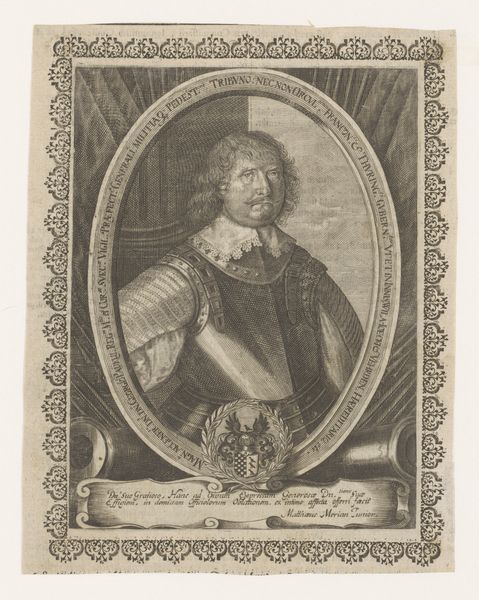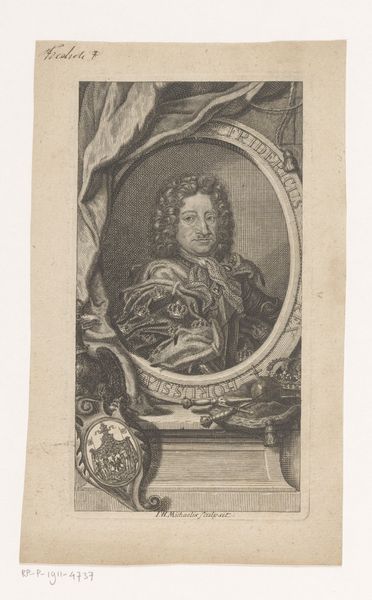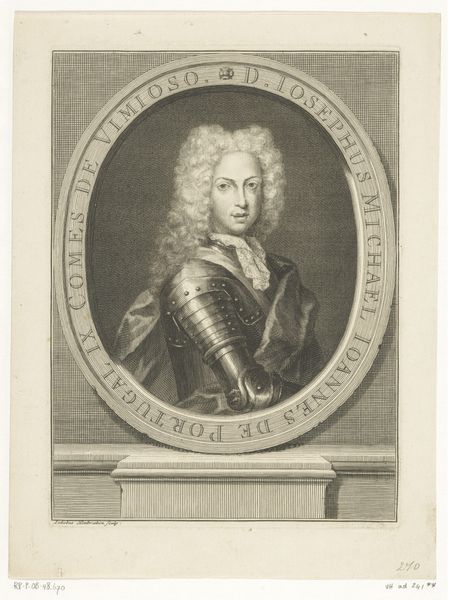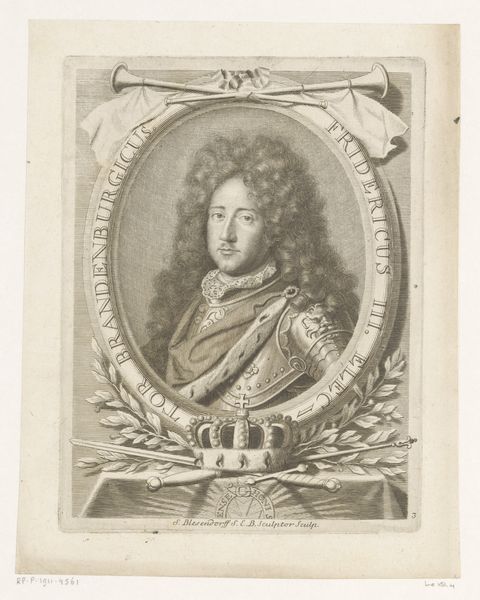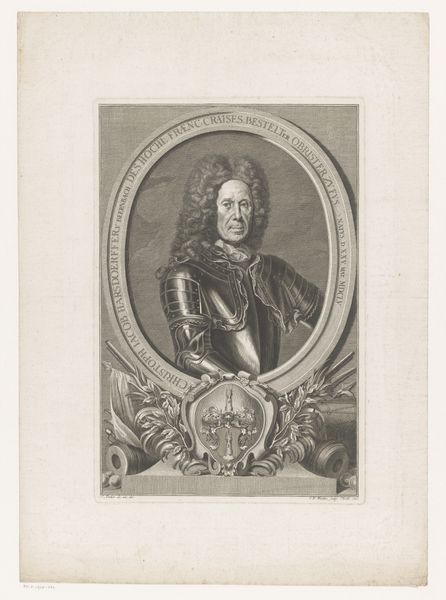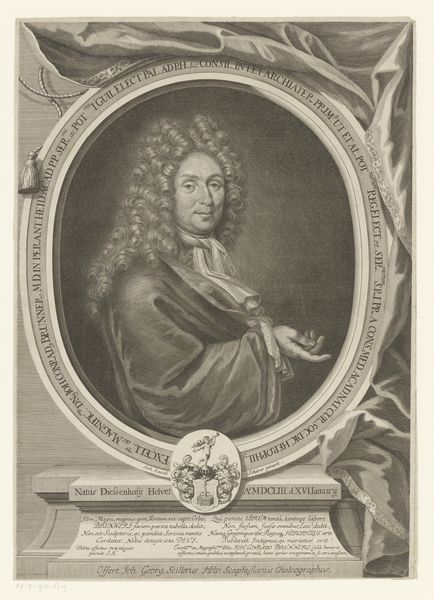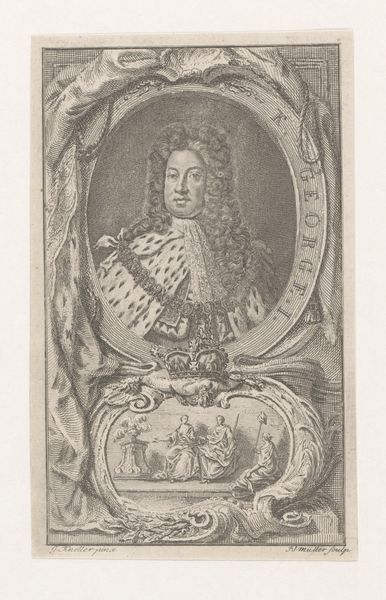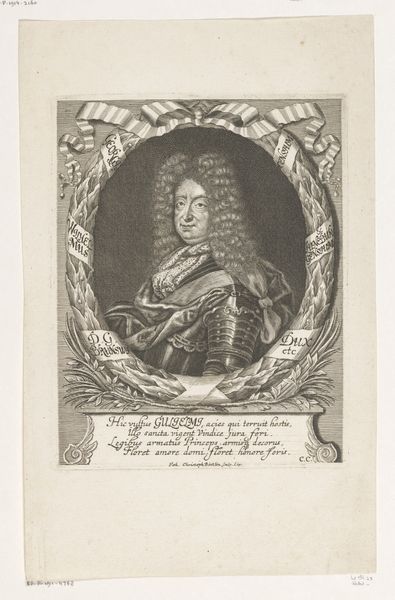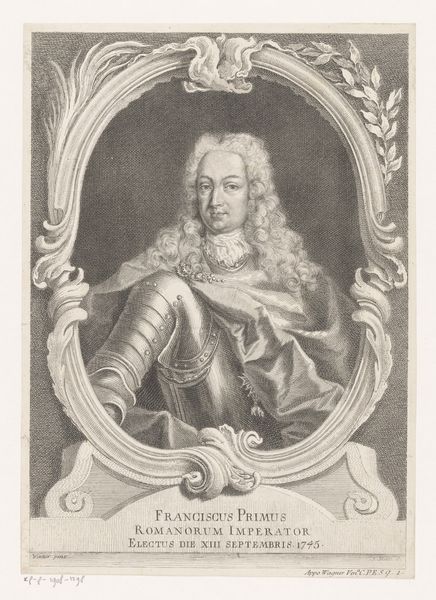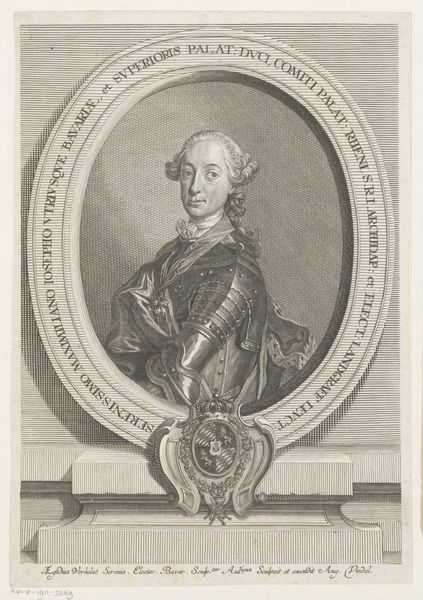
Portret van John Campbell, 2e hertog van Argyll, 1e hertog van Greenwich 18th century
0:00
0:00
print, engraving
#
portrait
#
baroque
# print
#
engraving
Dimensions: height 162 mm, width 100 mm
Copyright: Rijks Museum: Open Domain
Curator: Look at the detail in this engraving! The artwork before us is an 18th-century print, "Portret van John Campbell, 2e hertog van Argyll, 1e hertog van Greenwich," crafted by Johann Sebastian Müller. Editor: My initial impression is one of constrained opulence. The armor suggests power, yet the swirling baroque ornamentation around the portrait creates a sense of constructed authority and a period artificiality. Curator: Exactly. As a historian, what I find interesting is how portraiture like this reinforces a very particular social order. The print's circulation would have been a key component in solidifying Campbell's image and influence amongst the British elite and beyond. Prints are also more widely accessible. Editor: And considering it's an engraving, the process of creating those fine lines and textures itself demanded incredible skill. Note the detail of his armor – a showcase of craftsmanship but also representing his role within the military industrial complex. Curator: Absolutely. Think about the workshops involved. The material considerations and labor conditions are critical here. This image would have only been made possible through systems of patronage that extend down into specialized craftsman and materials and were also highly impacted by socio-economic class and hierarchy. Editor: How did that role as Duke of Argyll specifically factor in? The engraving of his heraldry at the bottom serves, in effect, as a brand, clearly stamping the Campbell dynasty's control and territory across the landscape. It's image-making for asserting political claim. Curator: A carefully controlled distribution of imagery, shaping a public identity rooted in power. The very circulation of prints in coffee houses or political gatherings further entrenches class dynamics, all filtered through institutional approval. Editor: So we see not just an individual, but the power dynamics solidified through printed image-making, material labor, and historical precedent. This print becomes more than just a picture; it is part of the political framework of that time. Curator: Precisely. Reflecting on this print allows me to consider the way systems of class are embedded into artistic creation and function as vehicles for maintaining authority. Editor: For me, seeing the complex layers within such a small format allows me to reflect on the consumption of such works, and how these portraits built and maintained power relations within eighteenth century British society.
Comments
No comments
Be the first to comment and join the conversation on the ultimate creative platform.
